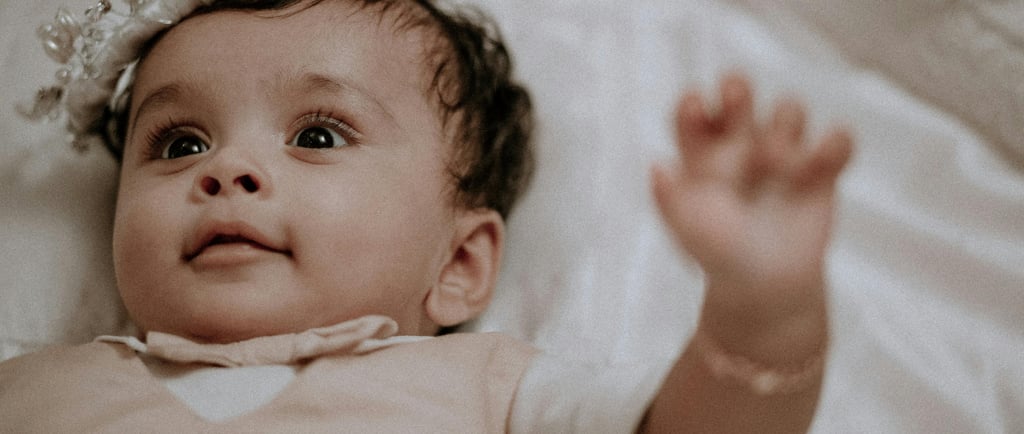Unlocking the mystery: How soon can newborns see clearly?
Explore the fascinating journey of vision development in newborns, from blurry shadows to clear, colorful sights.
2 min read


Welcoming a newborn into the world is filled with countless wonders and questions, one of the most common being about their ability to see. Parents are often eager to know when their little one will start seeing the world as they do. Let's delve into the development of sight in newborns, backed by scientific insights, to understand how and when babies gain clarity in their vision.
The First Glimpse: What Newborns See
Newborn vision is quite blurry at birth. A baby’s initial view of the world is indistinct, with only variations in light and shadows being perceivable. At birth, babies can see objects and people only within 8 to 12 inches away – just the right distance to gaze into their parents' faces while being held or fed.
Contrast and Color: In the first few weeks, newborns can detect large contrasts between light and dark. They start to develop color vision over the next few months, initially distinguishing between red and green, with blue and yellow taking a bit longer to be perceived.
Rapid Development in the First Months
Vision development is a significant part of early growth. By the end of the third month, a baby's vision improves to about 20/40. This enhancement allows them to recognize faces and objects from further away, making this a crucial period for bonding and cognitive development.
Tracking and Focus: Around two months old, babies start to follow moving objects with their eyes, a skill that is crucial for visual tracking. They also begin to focus more accurately, which helps in developing hand-eye coordination.
Milestones in the First Year
By the time a baby reaches four to six months, their color vision is usually well-developed, and they can see across the room, although not yet as clearly as an adult. Depth perception begins to develop as both eyes start to work together more effectively.
Clarity and Detail: By six months, a baby's vision reaches 20/20, the universal benchmark of normal visual acuity. This development coincides with the ability to see finer details, recognize patterns, and grasp small objects, which are essential for cognitive and motor skills development.
Enhancing Baby's Visual Development: Tips for Parents
Parents can play an active role in their newborn's visual development through simple activities:
Face Time: Spend plenty of time face-to-face with your baby. This not only strengthens emotional bonds but also encourages visual focus and recognition.
Changing Scenery: Regularly change your baby's surroundings and positions to provide new perspectives and stimulate visual exploration.
Bright and Contrasting Toys: Use toys that are bright and have high contrast to capture your baby's attention and improve focus and tracking skills.
Reading and Pointing: Even before they can understand the words, reading to your baby while pointing at the pictures helps in visual and cognitive development.
The journey from newborn blur to clear vision is filled with rapid growth and developmental milestones. Each stage of visual development plays a crucial role in overall growth, affecting cognitive, emotional, and motor skills. By understanding these phases and actively engaging with their newborns, parents can support and enhance their baby’s ability to see and understand the world around them.
